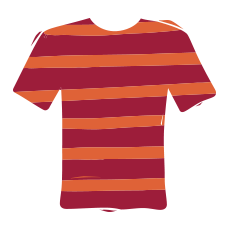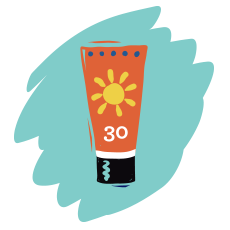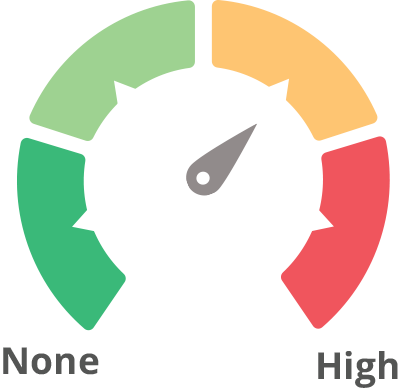

Please note that EWG obtains the displayed images of products from third parties and that the product's manufacturer or packager may change the product's packaging at any point in time. Therefore, EWG assumes no responsibility for the accuracy of images presented.
Close

EWG assumes no responsibility for the accuracy of images presented.
Sunscreens can break down while still in the bottle. To be safe dispose of products when the mixture clumps or separates.
This product contains chemical active ingredient(s) that the FDA does not have enough health safety data to classify as safe and effective: AVOBENZONE, HOMOSALATE, OCTISALATE, OCTOCRYLENE







Ingredients from label Active: Avobenzone 3% Homosalate 15% Octisalate 5% Octocrylene 10%, Inactive: Water, Butyloctyl Salicylate, Glycerin, Alcohol Denat., Silica, Caprylyl Methicone, Caprylic/Capric Triglyceride, Aluminum Starch Octenylsuccinate, Dimethicone, Polyurethane-62, Phenoxyethanol, Pentylene Glycol, Styrene/Acrylates Copolymer, Sodium Acryloyldimethyltaurate/VP Crosspolymer, Acrylates/Dimethicone Copolymer, Glyceryl Stearate, Chlorphenesin, Menthyl Lactate, Tocopheryl Acetate, Disodium EDTA, Trideceth-6, Hydrolyzed Hyaluronic Acid, Hydroxymethoxyphenyl Decanone, Sodium Hydroxide
Concerns: Allergies/immunotoxicity (low), Enhanced skin absorption, Use restrictions (moderate), Endocrine disruption (low), Biochemical or cellular level changes (high)
Concerns: Cancer (low), Developmental/reproductive toxicity (low), Use restrictions (high), Endocrine disruption (low), Irritation (skin, eyes, or lungs) (low)
Concerns: Enhanced skin absorption, Use restrictions (moderate), Endocrine disruption (low), Non-reproductive organ system toxicity (moderate), Ecotoxicology (low), Contamination concerns (SALICYLIC ACID and TRIMETHYLCYCLOHEXANOL)
Concerns: Use restrictions (moderate), Persistence and bioaccumulation (high), Non-reproductive organ system toxicity (moderate), Ecotoxicology (low)
Concerns: Allergies/immunotoxicity (low), Use restrictions (moderate), Non-reproductive organ system toxicity (moderate), Irritation (skin, eyes, or lungs) (high), Occupational hazards (high)
Concerns: Allergies/immunotoxicity (moderate), Use restrictions (moderate), Persistence and bioaccumulation (moderate), Non-reproductive organ system toxicity (low), Irritation (skin, eyes, or lungs) (moderate)
Concerns: Use restrictions (high), Non-reproductive organ system toxicity (moderate), Irritation (skin, eyes, or lungs) (low)
Concerns: Cancer (low), Allergies/immunotoxicity (moderate), Contamination concerns (HYDROQUINONE)
Concerns: Cancer (low), Allergies/immunotoxicity (low), Use restrictions (moderate), Endocrine disruption (low), Contamination concerns (BENZOIC ACID, 4-T-BUTYLBENZOIC ACID, BENZALDEHYDE, P-ANISIC ACID, ACETOPHENONE, and DIBENZOYLMETHANE)
Concerns: Allergies/immunotoxicity (low), Use restrictions (moderate), Persistence and bioaccumulation (low), Ecotoxicology (low), Irritation (skin, eyes, or lungs) (low), Biochemical or cellular level changes (high)
Concerns: Use restrictions (moderate)
Concerns: Use restrictions (low), Non-reproductive organ system toxicity (low), Contamination concerns (ALUMINUM POWDER)
Concerns: Use restrictions (low), Contamination concerns (METHACRYLIC ACID, ACRYLIC ACID, and 2-ETHYLHEXYL ACRYLATE)
Concerns: Enhanced skin absorption, Non-reproductive organ system toxicity (moderate), Multiple, additive exposure sources (low)
Concerns: Cancer (moderate), Use restrictions (low), Persistence and bioaccumulation (high), Non-reproductive organ system toxicity (low), Irritation (skin, eyes, or lungs) (low)
Concerns: Allergies/immunotoxicity (low), Endocrine disruption (low), Non-reproductive organ system toxicity (low), Irritation (skin, eyes, or lungs) (low)
Concerns: Allergies/immunotoxicity (low), Enhanced skin absorption, Irritation (skin, eyes, or lungs) (low)
Concerns: Enhanced skin absorption
Concerns: Use restrictions (low), Non-reproductive organ system toxicity (moderate), Irritation (skin, eyes, or lungs) (low)






UVA/UVB Balance

EWG's estimate of the UV protection provided by this product. An ideal sunscreen filters UVA and UVB rays evenly, but some sunscreens let too many UVA rays through.
Close